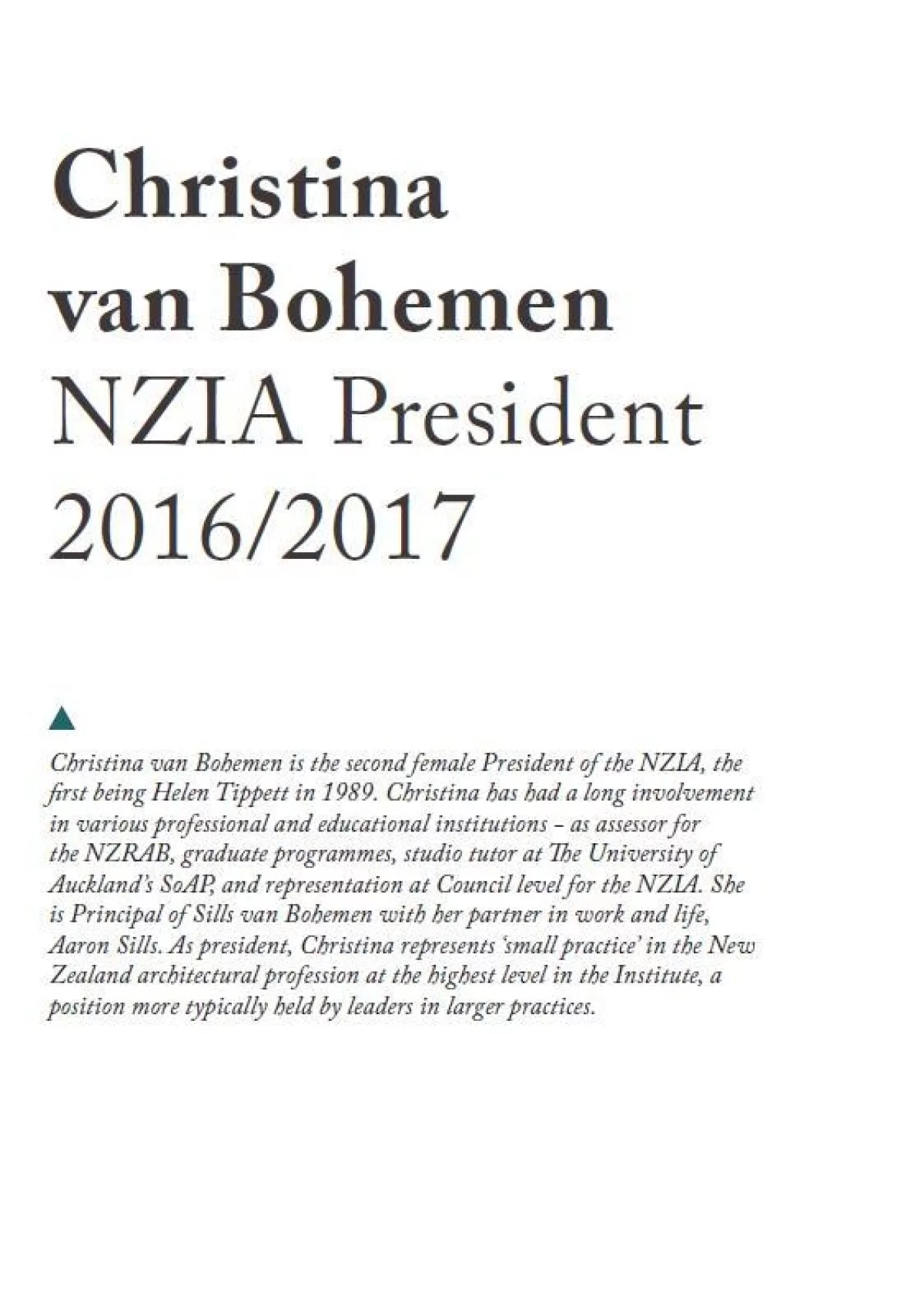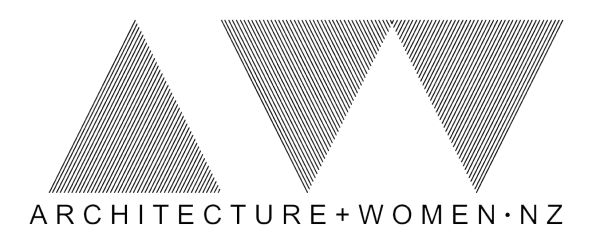WikiLounge: Christina van Bohemen Interview 2015 (Now Past NZIA President)
28 Nov 2019In 2015, A+W NZ members Rebecca Green and Victoria Streeter interviewed Christina van Bohemen, as part of our ongoing A+W NZ WikiLounge Project. The five interviews carried out in 2015 for this project were discussed at a Pecha Kucha event on Friday 25 September 2015 (pictured below), and our first WikiLounge was held on Saturday 26 September 2015, in Auckland. This interview pre-dates Christina's NZIA Presidency term 2016-2018.
The full interview is 1h 04m 27s and has been transcribed by Blagica Maneva.

Interviewer (Victoria Streeter) 0*03
You're probably aware that we're here to interview you as part of collecting stories of female architects that we wanted to hear more about. We are partaking in a project called WikiD, began in New York, with an organization called ArchiteXX. And since then, there have been WikiD parties in Melbourne, and in Berlin. Essentially, we are creating Wikipedia pages for female architects.
I'd like to start with some History Collections on your education and early practice.
Christina Van Boheman 0*47
Okay, well I was a relatively late starter, deciding to do architecture, I did an English degree first and quite a lot of art history. I'd actually always been interested in architecture. And in fact, I did do a course in my sixth form called engineering and architecture, which I found completely fascinating. And so it was an art history course but it was about architecture. And it was specific - it was about engineering and architecture. And then that lead into from Brunel and the bridges to William Morris and the arts and crafts through to Corbusier. So that was my that was kind of an introduction as a 16 year old, but… I didn't do art and I didn't do maths. So I didn't have the prerequisite subjects to do an architecture degree. And to be honest, it wasn't really on my radar. But as I got through my degree, which was an English major, I did as much Art History (as I could). In fact, I did quite a lot of architectural history, I did three courses out of the architecture department. I went to Victoria University and I did two courses, which were commonly taken by art students, that Russell Walden taught on the history of architecture. And then I also did a 3rd year paper, which was unusual for an art student, although there were two of us at the time, Julia Mills was doing the same course. So that was a step into … the architecture community, I suppose. But I was on the periphery. I finished my degree, and I went overseas, and I lived in New York for a while. I used to go and look at buildings in my spare time, and I went on holidays to Chicago and went to lectures and things like that. And then I worked in London, and I thought I was I was wondering whether I could find a job that was kind of related to this hobby of mine, which was an interest in architecture and buildings. And at that time, I had been working effectively as an administrator, secretarial type work. And I got a job in a … medium sized practice in London, … actually I didn't get the job I applied for which was to be a secretary, I think that they needed another pair of hands (on architectural projects). And so nine months later, I was still there. And I was doing things like assisting registration on a project when the contractor went bust and things like that, and working doing bits and pieces. And then I got a job in a large practice as their librarian. And It wasn't long after starting at that practice, that I was prompted by two New Zealand architects who were living in London, to come back (to New Zealand) and go back to university and study architecture.
Interviewer 3*41
How long was all this period?
Christina Van Boheman 3*48
I went to Sydney In January when I was 21 (1985). So then I came back to New Zealand In 1991, I think. And so I think I was 27 or 28 when I went to architecture school, which seemed terribly old at the time.
Interviewer 4*09
So you didn't have the prerequisites coming from high school, you have gone and worked and done all these really kind of interesting things, architecture adjacent. Did you have to do papers so that you could get into architecture school and build up these prerequisites?
Christina Van Boheman 4*25
Yes I did, well once I decided I was going to come back and apply for architecture school, I kind of knew that I needed to learn to draw. And when I was living in London I was pretty lucky to flat with a girl who was trying herself to get into the Royal Academy, and she helped me with the basics and corrected me in my drawing. Later I went to drawing classes (in London) and did lots of drawing on the weekends. Then I went and did a few pilgrimages, to fill in my portfolio as I had only one year before I went back to apply. So I went to Spain, France and then I went to Rome. I had a week on my own in Verona and Vicenza looking at Palladio. That was all putting together stuff for the portfolio. I came back and sent my portfolio to both schools (Victoria University and The University of Auckland). I was accepted to both schools, but Wellington had a proviso that they wanted me to do a foundation course for maths and physics and philosophy. I agreed to go there partly because I came back without any money and I knew I had some part time work there. So I was going to try and do first pro maths and physics and work part time. I quite quickly realized that that was too much, (but) I did work part time, and did maths and physics, which was terribly hard. And then at the end of that year, I got into first pro at Victoria University.
Interviewer 7*58
When you started your architecture education, did you have any mentors or role models, or were you maybe influenced by any artists?
Christina Van Boheman 8*12
At the time when I was in London, I knew New Zealanders who were working in practice. And I was really interested in what they were doing. And my particular interest in architecture was, I suppose an interest in public space, and urban design, although I didn't probably articulate it like that. So that was kind of the way I approached thinking about an interest in buildings. It was really interesting to me how community people use spaces and that was the thing that I enjoyed about cities.
Interviewer 9*52
The development of your career is very interesting. From English major, you went to architecture school and now you are establishing guidelines for development parcels for the Wynyard Precinct. Tell me more about that.
Christina Van Boheman 10*10
Well, I suppose In terms of my degree electives, I chose to do one urban design paper with Chris McDonald at Vic. And when I did my degree BArch, first half of the year, we did a research project and I did an analysis on a neighbourhood in Mt Victoria. So It grew from that interest. And once Aaron (Sills) and I started working together, in our practice, we moved into looking at things urban. Much of our urban design practice was launched by the DMPL (Devonport Masterplan) Competition for which we were shortlisted. After, we became known by working for the North Shore Council. And there were small off-shore (urban) projects that we started doing.
Interviewer 11*35
What did you do after university?
Christina Van Boheman 11*37
Okay, so I finished my degree. And then I was persuaded by a friend who I had worked with in London… to join Jasmax in Auckland. And we'd kind of been each other's career advisors along the way. I’d initially encouraged her to get a job at Jasmax, and then she rang and said, ‘what are you going to do why donʼt you come and work with Jasmax in Auckland?’ Then she got me an interview. So I had an interview with Ivan (Mercep) down in Wellington and then I had interview with Greg Bowden. So I finished university in December 1995 and started working at Jasmax in January 1996. I worked there until May 2001.
Interviewer 13*20
Can you talk about how it was restarting your career. You already had working experience and then when back to university, what was it like stepping back into the workforce again?
Christina Van Boheman 13*33
It was quite hard, on one hand I was a lot older then my peers, I came with no money back to New Zealand and I was a student again, it was such a radical turnaround of my life. And if I knew how hard it was going to be at that time, I would have never had the courage to do it. Then coming back into the workforce was kind of a mix between stress and confidence, because I had unique skills that were my advantages I had achieved before joining university. And I was pretty lucky to be scoring a job from my first interview, as opposed to having to track around with my portfolio to a whole bunch of faces. On the other hand the economy was just beginning to lift at the time I graduated.
Interviewer 16*38
Where there other students in a similar situation like yours? Like they havenʼt gone straight to university from high school or had studied another degree and then decided to do architecture?
Christina Van Boheman 16*56
There was quite a group of older women, the nervous returners, or gray powers, we called ourselves and that was quite a strong collective. So a number of us were 10 years older and some more, than everyone who would essentially come straight from school. I also met a friend with whom I was at high school with, but I just met her at the university as we both coincidentally decided to study architecture at the same time. Then we lived together for a couple of years during uni and we were pushing each other and giving support to one another. Outside of the university environment I had support from Gerald Parsonson, who gave me a job at the end of the third year until my last year. I worked there during the summer - and we were drawing everything by hand and (looking back), it was so frustrating when I compare it to how fast it is to do all of that on a computer. And of course I had an enormous moral support from my family too.
Interviewer 19*08
Letʼs return to how it was like working at Jasmax?
Christina Van Boheman 19*15
The company grew up quite fast, when I joined it was about 65 people and when I left it was 100 people, and when I left I was registered architect. I was pretty focused on learning what I needed to do and also asking for the work that would suit me. And there was an opportunity where I stepped in and confidently took a residential project to be the Project Architect on. Which was kind of terrifying and fantastic. Youʼd have to be strategic and think about how you are going to get there, but at the same time to not be so demanding, have an idea about where you want to go and work hard to get there.
Interviewer 21*07
Did you have mentors or people that have influenced the way that you design or have taught you, how to design and practice versus design in a studio from Jasmax?
Christina Van Boheman 21*19
Megan (Edwards) and Andrew Douglas.
Interviewer:
Where you a part of any urban design projects at Jasmax?
Christina Van Boheman:
No but I was very active on the Stop-Rethink Britomart campaign. And the other thing was, a competition for which the practices looked into the city and did a redesign, at that time there was the design of the Americaʼs Cup base and how the arrangement worked with the architecture practices who were located on the same physical street as the project. So there was that early interest.
Interviewer 26*23
How does your practice stay in the loop with whatʼs happening globally in urban design development?
Christina Van Boheman 26*35
We use the media and we travel to look at whatʼs happening in other cities. Most recently, we went to Vancouver, Seattle and Portland, and we spent three weeks cycling around each city looking at different buildings and neighbourhoods. They were interesting in a way that they had a relevance to New Zealand in a way that most European cities donʼt - or there is a different kind of texture. But seeing new world cities and car dominant issues that they have and we have, seeing what interesting things are happening, their communities and architecture and spaces. And I think that the quality and the value of a street, if itʼs a well designed street, then the buildings are responding or creating a good enclosure.
Interviewer 28*06
Do you think that blogging and tweeting is an important vehicle for visibility?
Christina Van Boheman 28*13
Well, I suppose is that whole issue in terms of the brand? And if that's an important thing, one's brand, then yes, it is, I suppose? Well, I don't know. That certainly might make one be noticed. And it might make one more likely to be asked for a comment. But how important it is in the great scheme of things? I'm not sure.
Interviewer 28*37
Next year, you become president of the NZIA. Would you like to speak a little bit about that?
Christina Van Boheman 28*46
Itʼs a bit daunting, but itʼs a great honour. I agreed to be nominated along with others, because at the time we had a lot of discussion about the need of greater transparency and also the fact that the typical shoulder tapping tradition tends to lead to man nominating more men like themselves, which is not a phenomenon that is limited to the NZIA. And once that opportunity came around, the female population stepped up. So thatʼs why I put myself up and I was a bit shocked when I got the call that it was me. It is exciting cause in the end such challenges present opportunities.
Interviewer 33*36
Do you have any architectural values? Or what are your architectural values?
Christina Van Boheman 33*43
People. People are at the centre of architecture and people are at the centre of cities and communities. But also, I canʼt help but admire architects who push the boundaries.
Interviewer 34*26
How do you separate the urban design thinking and do you use some of those characteristic when you are designing a house or an apartment block?
Christina Van Boheman 35*04
It gets hard to sort of separate it all really. There are basic human responses that work at a house level, or an apartment level. And there are also things that you look for in a city. I mean, that's kind of overly simplistic, but thinking about different places for doing things, places to be public, places to be intimate, places to be relaxed and their formality and ritual.
Interviewer 36*01
What are your ambitions, objectives and hopes?
Christina Van Boheman 36*05
I hope to be a reasonably good (NZIA) President. My ambitions is simple, to be happy and design beautiful buildings or spaces. And there's always just so much to learn to be a better practitioner.
Interviewer 37*14
What have been your challenges or do you face any challenges today?
Christina Van Boheman 37*19
Lots of challenges. But some of those might be my neuroses. The challenges (that come with every) architecture project. Specifically, meeting all those competing requirements of the architecture opportunity, versus the pressures of the burnout. But also you know, the constraints, the budget, and I suppose that's where those tensions are - things that practicing as I do with Aaron, we can complement each other or work together to deal with those because I think that I worry sometimes too much about the budget and the constraints. But at the same time it has to be the opportunity for the architect.
Interviewer 38*15
Can you talk a little bit about how you and Aaron decided to set up a practice together.
Christina Van Boheman 38*22
We decided to set up a practice together when I decided that I needed to leave Jasmax. I was a bit at a burnout stage, I had been working as project architect on an AUT project, which was a great project. But I got to a point and I just felt that I needed to change. And Aaron and I were going out at the time, and we thought, let's try and practice together. So there wasn't a particularly profound strategy around deciding to set up together.
Interviewer 39*04
How did you start winning (work)? You've gone from the kind of big architectural machine that is Jasmax, and you're out by yourself, when there's (just) the two of you?
Christina Van Boheman 39*16
Well, I think we won work by contacts. And some of our initial work was projects through clients that I had had at Jasmax for bits and pieces. For example, we did a bit of work at both AUT and some Kindergartens. However, just ahead of us were the stars of RTA, so Rich (Naish), and Tim (Melville) got the serious jobs and did some really significant projects with both AUT and some Kindergartens. And we did some smaller bits and pieces. But after that projects came to us through personal connection, I suppose one thing leading to another. And the other thing, the great source of work has been from other architects. And there's nothing quite so nice as to be referred to by another architect, who is no longer doing that particular work. And I suppose the classic example is we got asked from a commercial architect to do their house alteration or their new house... So architects have been very generous and a number of our projects have come through an architectural connection. We also like to if we can't do a project to be able to refer somebody on. And then, you know, and then momentum happens.
Interviewer 41*26
Do you work on competitions?
Christina Van Boheman 41*28
As a practice, we haven't done a competition for a while actually, we were just discussing one today. But I havenʼt worked on a competition myself.
Interviewer
Are there any ideas or concepts that you feel you've championed or developed?
Christina Van Boheman:
Not particularly other than to say I think as an advocate for good city and neighbourhood development as my particular interest. And I hope that my new role as NZIA President, will present itself as an encouragement to young female architects, that we can do it too. And in terms of practice, Aaron and I have made a practice that is successful on our own merits and we do a variety of work.
Interviewer 42*42
It sounds like you're really looking forward to this role as being the President of the NZIA. And you've been talking about, championing a woman at the top. Has being a woman in architecture and sort of being visible, something that's been important to you throughout your career? Or did you think about it when you were a student? Or is it something that has recently or in recent memory, become an interest of yours?
Christina Van Boheman 43*11
I regard myself as a feminist. In terms of my practicing, Iʼm not approaching it as - practicing as a woman-, Iʼm practicing as me. In my own experience, sometimes I find it difficult when I think back at times that were difficult, where they difficult because I was a woman? Or was it because I was a neurotic, older person thinking, you know, I should be doing better in the situation.
Interviewer:
Do you have any favourite projects?
Christina Van Boheman:
We have worked on residential projects and urban design projects over the years, and I find that I like them both. In terms of projects, I really enjoyed doing the Auckland Amalgamation in Takapuna and that gave us an opportunity to analyze the neighbourhoods and see how Auckland could grow and develop into nicer neighbourhoods. And it gave us the opportunity to work a lot with the community board and to some extent with the community in terms of consultation. At the moment we are doing a multi-generational family house, and the idea of two generations and eventually three generations living in one dwelling is a model that could provide a way for people to think about how they age and how communities age.
Interviewer 46*54
You also do some tutoring as well?
Christina Van Boheman 46*58
Not so much now. Over the years Aaron and I have done lots, weʼve done Studio Crits, and Aaron has been (Thesis) supervisor. We ran a studio together a couple of years ago at Auckland University. But at the moment we limit our extra pro bono time outside of the office because of commitments, because I'm also on the Registration Board (NZRAB) as well as NZIA Council. So I have to curb what I do outside of the office really. So at the moment these days we are generally saying no to involvement. But there will be turn of time when weʼll go back and do more if people want us.
Interviewer 47*47
You sound very very busy and active in the architectural community. But what are the types of things you do when you have some downtime?
Christina Van Boheman 47*59
I like to ride my bike to Kohimarama and sit on the beach and read books.
Interviewer 48*04
Anything that you are reading at the moment, or recently read, that you like or dislike?
Christina Van Boheman 48*08
One which I particularly enjoyed was, Barbara Kingsolver, book called The Bean Trees. And now I'm just reading one by Mal Peet, who is a British writer, he wrote a fantastic book which I read a couple of years ago, called, something like, A Day the World Exploded (Life: An Exploded Diagram). This one is called Tamar, and its a cross generational story set in WW2, and to me it resonates with the world my parent grew up in and the things that finished my background. My escape is into fiction.
Interviewer 50*20
You mentioned before that you studied English? Do you still have that interest in literature?
Christina Van Boheman 50*29
Yeah, I had always thought I would have been a school teacher. And I suppose my interest in literature today is recreation.
Interviewer 51*53
I would really like to know, if you ever see yourself stopping urban design and architecture?
Christina Van Boheman 52*14
I can't imagine stopping. And I think that I can't imagine not doing anything. You know, I don't know what the definition of architecture might be. There could be a certain point at which your involvement and the proficiency broadly could be a range of activities, whether it's necessarily drawing things or something else.
Interviewer 53*51
We went from high school, though you hadn't applied to go to architecture school straight away?
Christina Van Boheman 53*56
No. When I finished from high school, I went to university, and then I applied to go to journalism school, although I didnʼt get in. I was living in Sydney that summer. And the idea of coming back to go to Teacher Training College didn't thrill me, so I thought I'm in a place to start saving some money and see where I end up.
Interviewer 54*23
Was it because at the time you were leaving high school, (architecture) just wasn't a career option that was discussed?
Christina Van Boheman 54*34
I think it wasn't on my radar, because I wasn't good at the prerequisite subjects… The other two things that I toyed with for two minutes, was to do law, but I didn't want to do law, because I had two brothers who were doing law and I thought that I couldn't be as good as them. Which is ironic, because my sister is a teacher and I was happy to go down that route. Look, I was pretty unfocused when I left school, I kind of drifted along. And I think that was one of the great things about going back to university when I was older, the thing of youth is wasted on the young, because I really relished the opportunity that provided me and I was able to go back because student loans had just been invented. Otherwise, I wouldn't have been able to support myself, I had a bit of a student allowance and student loans. And the fees in the 90s were not horrific, so it was kind of do-able with a part time job.
Interviewer 55*58
We haven't actually spoken about your early early education, should we talk a little bit about that?
Christina Van Boheman 56*04
I grew up in Havelock North with my parents and our house was designed by Len Hoogerbrug - and I'm sure that that had an influence on my interest in space. One of my uncles in Holland, who I didn't meet till I was about 20-something, was also an architect. So there was this kind of interest in architecture and architects in my household. I went to school in Hastings and I went to my secondary school in Wellington, where I boarded (at a Catholic College).
The other day when I went to Marilyn Reynolds funeral, one of her children recounted that Marilyn had gone to the same school as me, and that she was inspired by the… paintings of cathedrals that were around the school. It was a kind of near Gothic building, which was colloquially known as Colditz with the local suburb, (and) which was a bit run down, but it did have some rather interesting spaces and a really lovely, near Gothic chapel with a five second echo. So I suppose I was kind of generally interested in that, but I don't know that it played a big part.
Although I was just thinking as I said that, I was recalling that in the sixth form, we had to do this project as a kind of thesis project for history course. I found the whole thing really fascinating. I decided to do the study about European styles of architecture and Victorian and Edwardian Wellington. I recall taking up my Instamatic camera and walking around the government buildings around Wellington and taking photographs of timber quoins. So that was my first kind of research project, and looking at buildings and looking at the way that Victorian Edwardian buildings had, you know, facades and backside and things like that. So that happened in secondary school.
Interviewer 1*02*11
What was your favorite project at Jasmax that you took part in?
Christina Van Boheman 1*02*20
Probably the Manual House, which was a house that I did with Pip Cheshire, I did a couple of new houses with Pip, that was the first of them. And I was terrified it was a big challenge, but he showed faith in me and I worked bloody hard. It was a huge challenge but it was hugely rewarding. Pip was good to work for and he knew that I was a bit of a stress cadet but he could kind of allay my fears… And then the project that I worked on before I left Jasmax was the administration building across the Akoranga Campus and I was the Project Architect. That one was the the biggest non residential project that I've done that was actually quite a nice scale, so It wasn't huge. I suppose I was really lucky with that project because I was involved from the inception of preparing the brief and all that upfront stuff right through to defects liability period. So it was a really good project… I think managing a team in an architectural practice is a big challenge.
Interviewer 1*04*29
Thank you very much for your time.













